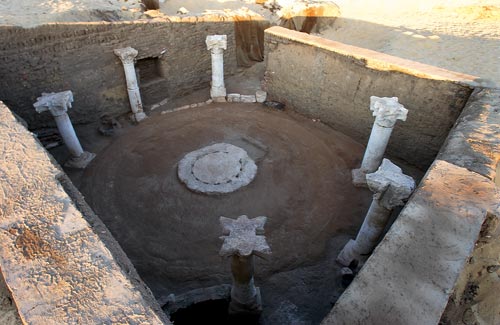However, the surprises do not stop there. When the mission excavated a large fortified villa from the Byzantine and Arab periods, located not far from the Osireion, researchers found numerous reused blocks of stone with Coptic decoration that also bear fragments of inscriptions and reliefs similar to the ones in Per-Khef. It is therefore likely that the superstructure of Per-Khef began to be dismantled in the Byzantine period.

The large fortified villa has a series of outbuildings related to Christian worship, suggesting that it became a monastery for monks at some time, one of many monasteries erected in the vicinity of Oxyrhynchus in the Coptic period. In any event, the place was occupied after the Arab conquest. The finds include an Arab inscription from the seventh century, as well as a tombstone with an inscription from the reign of the emperor Diocletian, which also gives a date toward the end of the seventh century.

Near the villa or monastery, which is located to the northwest of the city, we have also found a hermitage with important Coptic inscriptions; a little treasure of 600 coins from the fourth and fifth centuries AD; a votive altar from around the first century BC, which could bear some relation to the overland route north out of the city; and a bird necropolis and an underground quarry. The rest of the land between the west wall of the city and the Osireion is occupied by an extensive Greco-Roman necropolis.






